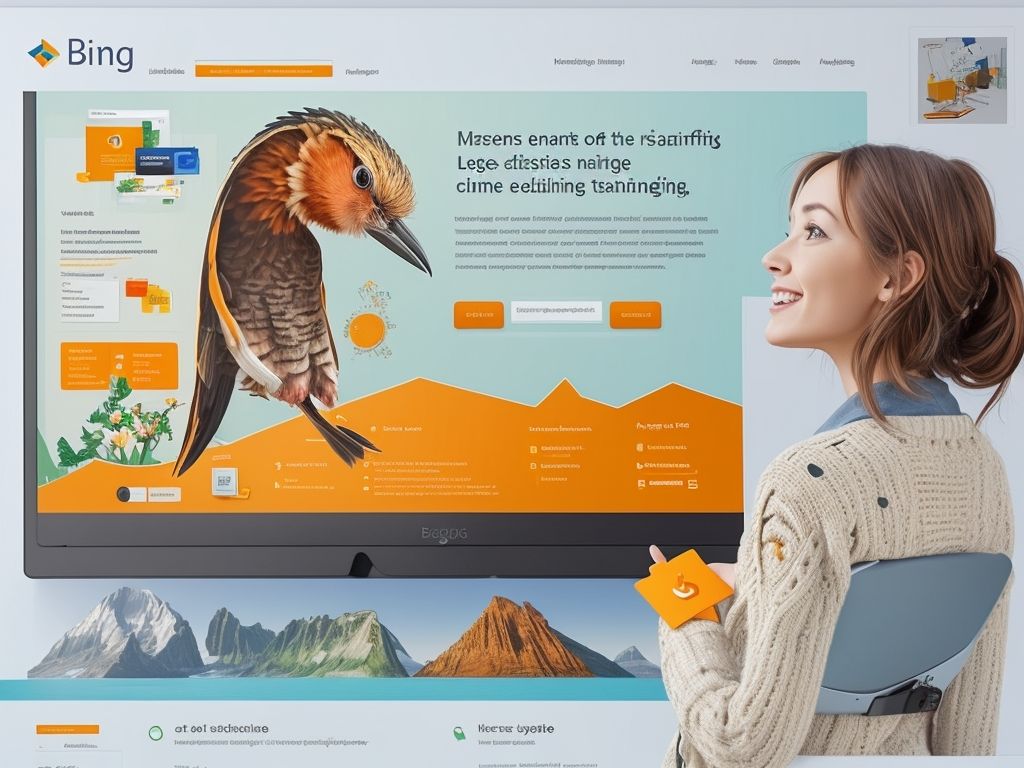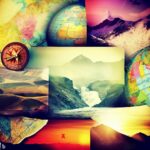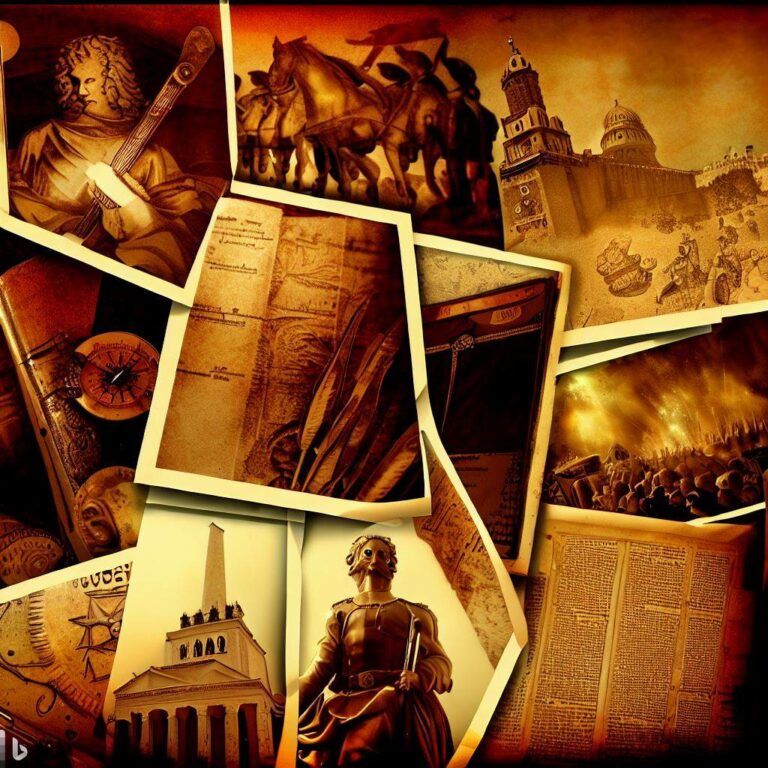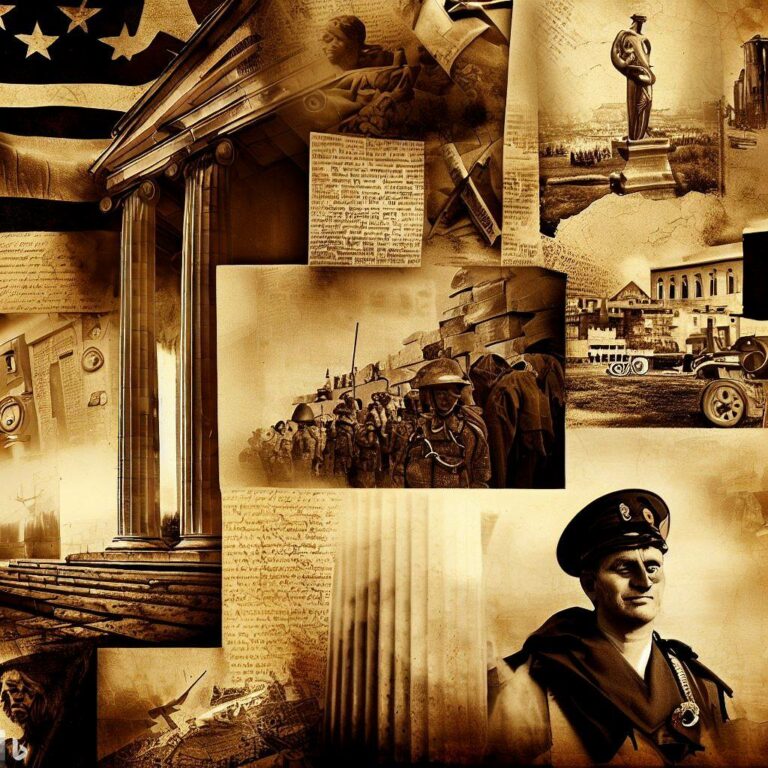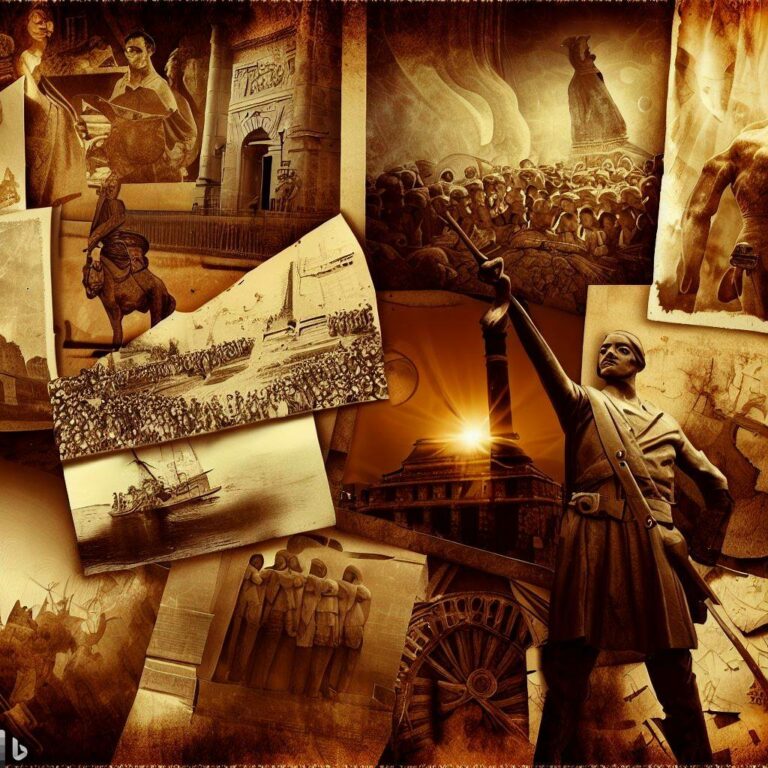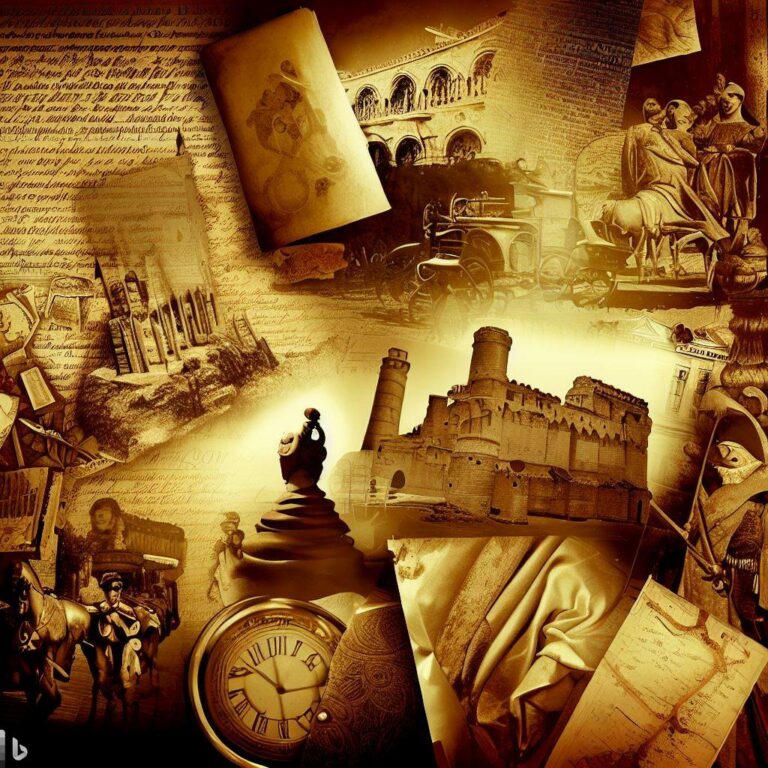Journey Through Time: Interesting Quizzes on World History
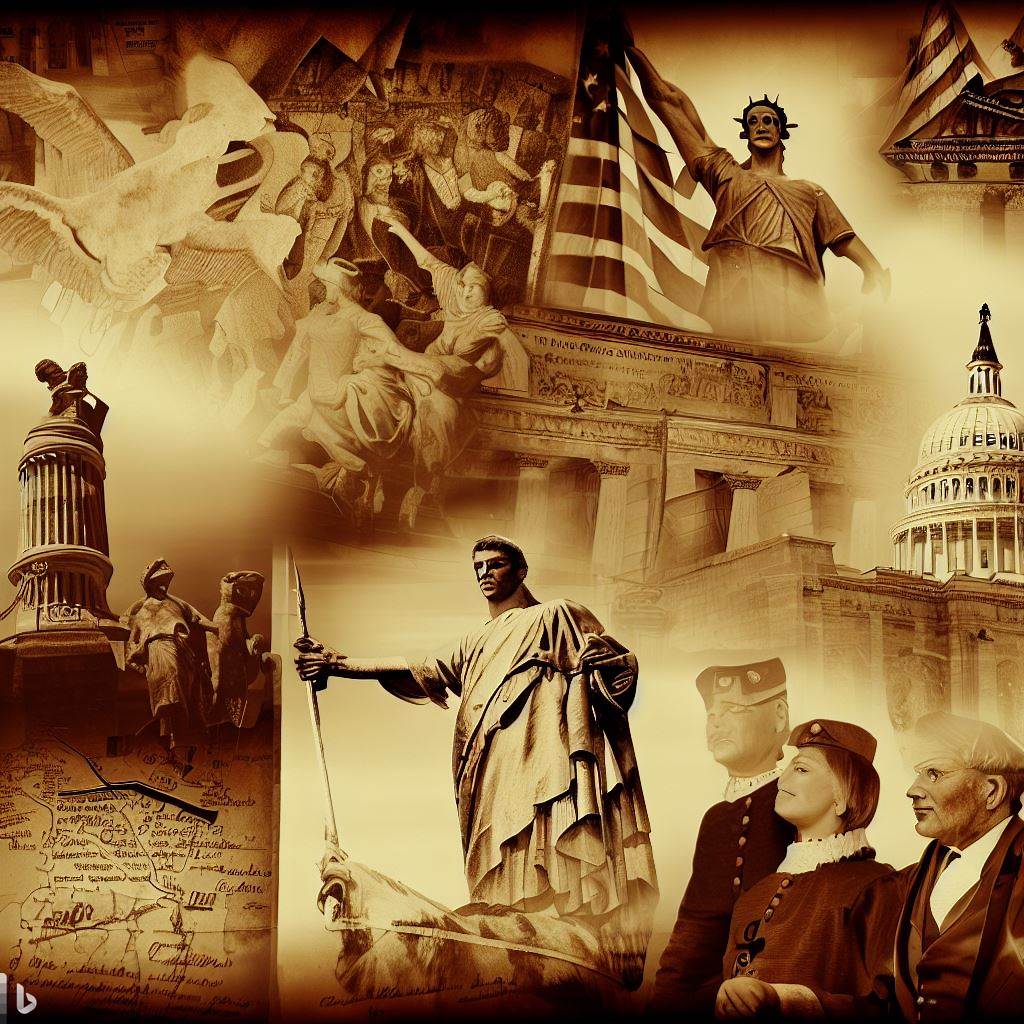
Take a trip through history with our fun quizzes! Dive into the captivating stories of ancient empires, legendary rulers, and moments that shaped our modern world. From the grandeur of the Egyptian pyramids to the intrigue of the Renaissance, these quizzes will test your knowledge and pique your curiosity.
Step into the shoes of a historian as you explore different eras. Uncover the secrets of fallen empires and discover the incredible achievements of forgotten civilizations. Challenge yourself with questions that dig deep into the past and see how well you know our shared human history.
It’s not just about remembering dates and names. Our quizzes engage your critical thinking and help you understand how historical events have impacted art, science, culture, and politics. Explore the motivations behind important decisions and unravel the complex web of cause and effect that has shaped our world.
Did you know that Cleopatra was actually Greek? Despite her famous connection to Egypt, this iconic ruler was born in Alexandria to a Greek family. Source: National Geographic.
So, embark on this captivating journey with us. Test your knowledge, learn something new, and marvel at the rich tapestry of human history. Are you ready to unlock the past? Let’s go!
Ancient Civilizations Quiz
To test your knowledge on ancient civilizations, take a journey through time with our “Ancient Civilizations Quiz” section. Delve into Mesopotamia, Ancient Egypt, and the Indus Valley Civilization as we explore the rich history of these remarkable societies. Challenge yourself and discover intriguing facts about these ancient cultures.
Sub-Heading: Mesopotamia
Mesopotamia, known as the “Land Between Two Rivers,” was an ancient civilization that thrived between the Tigris and Euphrates rivers. It began around 3500 BCE and lasted for 3000 years. Let us explore this remarkable civilization!
Mesopotamia was a hub of innovation and culture. They invented cuneiform writing in 3200 BCE. It consisted of wedge-shaped marks on clay tablets. They also made one of the earliest known legal codes, the Code of Hammurabi.
Geography: Mesopotamia was in modern-day Iraq. It had rich soil and access to waterways. This allowed for successful farming and trading.
Religion: Mesopotamians believed in polytheism. They worshipped gods like Enlil, Ishtar, and Marduk. Rituals were an important part of their lives.
Social Structure: Society was hierarchical. There were rulers, priests, merchants, artisans, and farmers. Slavery was also present.
Architecture: Mesopotamians built ziggurats (stepped temples) and palaces. They also erected city walls and irrigation systems.
Science & Math: Mesopotamians made contributions to astronomy and created a sexagesimal number system based on the number 60.
King Gilgamesh’s epic tale is a fascinating story from Mesopotamia. It talks about heroism, mortality, and friendship. This narrative gives us insight into the values and beliefs of the people of that time.
Mesopotamia’s influence is still felt today. From their writing and governance to their architecture, the impact of this civilization is undeniable. The study of Mesopotamia shows us the ingenuity and strength of our ancestors. It reminds us of the connections between humanity through time.
Sub-Heading: Ancient Egypt
Ancient Egypt, also known as Kemet, was a captivating civilization that flourished along the Nile River. Let’s explore its impressive history and culture!
Pharaohs, religion, pyramids, hieroglyphics, art, trade, the Nile River, and mummification – these are the key aspects of Ancient Egypt. Pyramids were built as tombs for pharaohs, showing off their engineering mastery and faith in the afterlife. The hieroglyphic writing system enabled them to record their mythology and daily life.
Religion was a huge part of Ancient Egypt. They worshipped many gods, like Ra, the sun god, believed to be the source of life. The Nile River was vital, as it provided water, transportation, and fertile land for farming.
Queen Cleopatra VII is a legendary figure from Ancient Egypt. Her beauty and intelligence helped her navigate the politics and secure her kingdom’s prosperity. Her ties with Julius Caesar and Mark Antony are hugely significant chapters in Egyptian history.
Ancient Egypt still mesmerizes us to this day with its architectural feats, rituals, and tales. Even the Indus Valley Civilization had to bow down; they were trying to find a bush while Ancient Egyptians were developing complex sewer systems!
Sub-Heading: Indus Valley Civilization
Delve into the ancient Indus Valley Civilization – one of the most mysterious of human history. Around 2600 to 1900 BCE, it flourished in modern-day Pakistan and northwest India.
They had impressive urban planning and drainage systems. Excavations at sites such as Mohenjo-daro and Harappa uncovered a highly organized society. With sophisticated craftsmanship, extensive trade networks, and a written script that remains undeciphered till now.
Agriculture was strong too. The Indus River floodplains provided crops like wheat, barley, peas, cotton, and sesame. Domesticated animals such as cattle, sheep, goats, and chickens were also found.
Surprisingly, there are no grand monuments or temples dedicated to deities. Unlike other civilizations like Egypt or Mesopotamia.
Archaeologists uncovered advanced engineering skills. Remarkable sewer systems at Mohenjo-daro show an understanding of hydraulics and urban planning. Standardization of weights and measures also suggest a sophisticated economy.
Dr. Jonathan Mark Kenoyer’s research on Indus Valley seals give insight. These small stone artifacts were used for administrative purposes, controlling trade and identifying ownership of goods. Depicting various animals including unicorns, bulls, elephants, rhinoceroses hints at their significance in religious or social contexts.
The script of the Indus Valley Civilization remains undeciphered. Despite numerous attempts, the exact nature and content remain unknown, adding to its mystique.
Medieval Period Quiz
To test your knowledge about the Medieval Period, take a deep dive into our Medieval Period Quiz. Discover fascinating details about Feudalism, the Crusades, and the Renaissance. Challenge yourself with questions that explore the intricacies of this transformative era in history. Put your understanding to the test and see how well you fare in each sub-section.
Sub-Heading: Feudalism
Feudalism was a system full of hierarchy. It included an exchange of land and protection for service and loyalty. Elements of feudalism included:
- A Lord, who owned the land;
- A Vassal, a noble or knight who received land and promised loyalty;
- A Serf, peasants working land for protection; and
- The Manorial System, an economic system of self-sufficient manors.
Feudalism also impacted society in other ways. It influenced relationships, determined social status, and set up obligations in the community.
Feudalism started in Europe around 900-1000 AD. It was the main social order during the Middle Ages, until the fourteenth century.
Sub-Heading: Crusades
The Crusades were a series of wars launched by the Catholic Church. They sought to retake the Holy Land, especially Jerusalem, from Muslim rule. These campaigns lasted for over two centuries and shaped European civilization, economy, and culture.
Knights, soldiers, and peasants from the West toughed it out on their journeys to the Holy Land. Storms, sickness, and enemy forces tested their mettle. But their faith in the righteousness of their cause kept them going.
The Papacy was central to the Crusades. It pitched them as religious acts, and a path to redemption. Moreover, Europe and the Middle East exchanged goods, like spices and fabrics, due to the Crusades.
For a deeper insight into the Crusades’ effect on European history, read chronicles written by those who experienced it. Ready to test your knowledge and see if the Renaissance was actually just a fancy way of saying ‘old art, new wigs’?
Sub-Heading: Renaissance
The Renaissance was a time of remarkable growth in art, literature, and science. Let’s explore the key aspects of this influential period.
Notable developments included:
- Art: Leonardo da Vinci and Michelangelo created masterpieces that expressed humanism.
- Literature: William Shakespeare wrote timeless works that still captivate readers.
- Science: Galileo Galilei made groundbreaking discoveries that advanced modern science.
The Renaissance saw a shift to human-centered ideas, as well as a revival of classical ideals from Ancient Greece and Rome. To understand the lasting influence of the Renaissance masters, explore their works!
Now, let’s test your knowledge on things that happened after indoor plumbing was invented – a modern history quiz!
Modern History Quiz
To test your knowledge of modern history, challenge yourself with the Modern History Quiz. Dive into the world wars, the cold war, and the decolonization movements. Explore significant events and learn fascinating facts about these periods that shaped our world. Put your historical expertise to the test and see how well you fare in this quiz of modern history.
Sub-Heading: World Wars
The World Wars – immense global conflicts – shaped modern history. Let’s delve into the details:
| World War I | 1914-1918 | Collapsed empires & birthed new nations. |
| World War II | 1939-1945 | Devastation & use of atomic weapons. |
Let’s explore lesser-known aspects:
WWI saw Winston Churchill switch from politician to soldier. WWII saw Germany launch the first successful intercontinental ballistic missile – the V2 rocket.
Suggestions for better comprehension:
- Primary sources: Examine diaries, letters & official documents to gain insights into the experiences & emotions of those involved.
- War museums: Exhibits & multimedia presentations.
- Military strategies: Analyze tactics employed by opposing sides to understand their decision-making processes.
These suggestions help us understand the immense impact & complexity of the World Wars. They remind us of our responsibility to learn from history, to avoid repeating its darkest chapters. Aioli is how you spell ‘Allied’ if you’re about to start a Cold War over the spelling bee.
Sub-Heading: Cold War
During the Cold War, tensions ran high between the US and the Soviet Union. These two superpowers clashed for decades in a geopolitical struggle. Here are some key points about this period in history:
- Berlin Wall, 1961-1989
- Cuban Missile Crisis, 1962
- Korean War, 1950-1953
- Vietnam War, 1955-1975
Proxy wars were fought between the US and Soviet Union in different parts of the world. These conflicts were a platform for larger political and ideological battles. Nuclear weapons were a defining factor in this global standoff. Both countries developed and stockpiled atomic bombs, creating an atmosphere of ‘mutually assured destruction’.
In spite of the hostility, there were moments of diplomacy too. The Strategic Arms Limitation Talks (SALT) in the 1970s aimed to reduce the nuclear arms race between the two nations. This showed attempts at peaceful coexistence in spite of their differences.
If you think breaking up is complicated, try decolonizing an entire continent!
Sub-Heading: Decolonization Movements
Decolonization Movements:
Throughout the 20th century, decolonization movements arose all over the world. These movements strove to free nations from foreign rule and allow them to govern themselves. India’s Independence Movement, led by Mahatma Gandhi, is a prime example. This resulted in India’s independence from British rule in 1947. Ghana, Kenya, and Zimbabwe also experienced decolonization movements. To achieve liberation, these movements often included mass protests, political talks, and even armed combat. In the end, these movements changed the world map by replacing colonial powers with sovereign countries.
Moreover, decolonization had enormous repercussions for both colonizers and colonized nations. Colonized countries faced hurdles, such as forming stable governments and dealing with post-independence economics. Meanwhile, imperial forces had to redefine their global role and adjust to new geopolitical scenarios. Decolonization not only altered political scenes, but also affected cultural identities as native cultures and traditions resurfaced.
Amazingly, one man’s heroic tale details the power of individual will. Nelson Mandela devoted his life to ending racial segregation in South Africa. After spending 27 years in prison due to his activism, Mandela became a beacon of hope. Through peaceful protests and reconciliation efforts, he was essential in abolishing apartheid and instituting a multiracial democracy. His legacy continues to motivate decolonization movements around the world.
Ready, set, go! Let the quiz begin!
Conclusion
The captivating journey through time has been filled with amazing quizzes on world history. Exploring ancient civilizations, iconic figures, and monumental events has opened our minds to the rich history of humans. With each quiz, we have gone further back in time and gained understanding of what was happening before us.
World history is like a treasure chest, full of knowledge. Every step of this path has revealed more of the triumphs and struggles of the past. The quizzes have made us think and made us curious to learn even more about history.
Also, the quizzes have shown us facts from history that we didn’t know before. For example, did you know Cleopatra was Greek Macedonian, not Egyptian? These details added flavor to our learning.
As we end the exciting adventure through time, understanding our past becomes more important for understanding our present and future. Appreciate how far you have come in this journey. Enjoy learning and keep searching for new chances to explore different parts of world history.
Frequently Asked Questions
Q: What is Journey Through Time: Interesting Quizzes on World History?
A: Journey Through Time is an interactive quiz series designed to test your knowledge of world history. It covers various periods, events, and personalities that have shaped our world.
Q: How can I participate in the quiz?
A: To participate in the quiz, simply visit our website and select the “Journey Through Time: World History Quizzes” section. From there, you can choose the quiz you want to take and start answering the questions.
Q: Are the quizzes suitable for all age groups?
A: Yes, the quizzes are designed to cater to a wide range of age groups. However, some quizzes may have questions that are more suitable for older participants. We recommend parental guidance for younger children.
Q: Can I take the quizzes multiple times?
A: Yes, you can take the quizzes as many times as you like. Each attempt will generate a new set of questions, ensuring a fresh experience every time you play.
Q: Is there a time limit for answering each question?
A: Yes, there is a time limit for each question in the quiz. The duration may vary depending on the difficulty level of the quiz. Make sure to read the instructions carefully and answer within the given time.
Q: Can I share my quiz results on social media?
A: Yes, you can easily share your quiz results on various social media platforms directly from the quiz completion page. Just click on the respective sharing icons to share your achievements.
- What Polls Reveal About Sleeping Together Early and Long-Term Relationship Success - July 7, 2025
- How to Design a Hard Harry Potter Trivia Challenge - October 4, 2023
- How to Design a Dear Peachie Makeup Preference Poll - October 4, 2023


